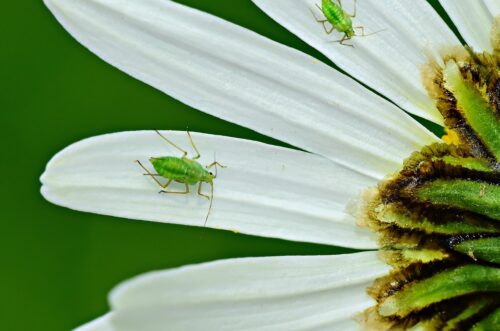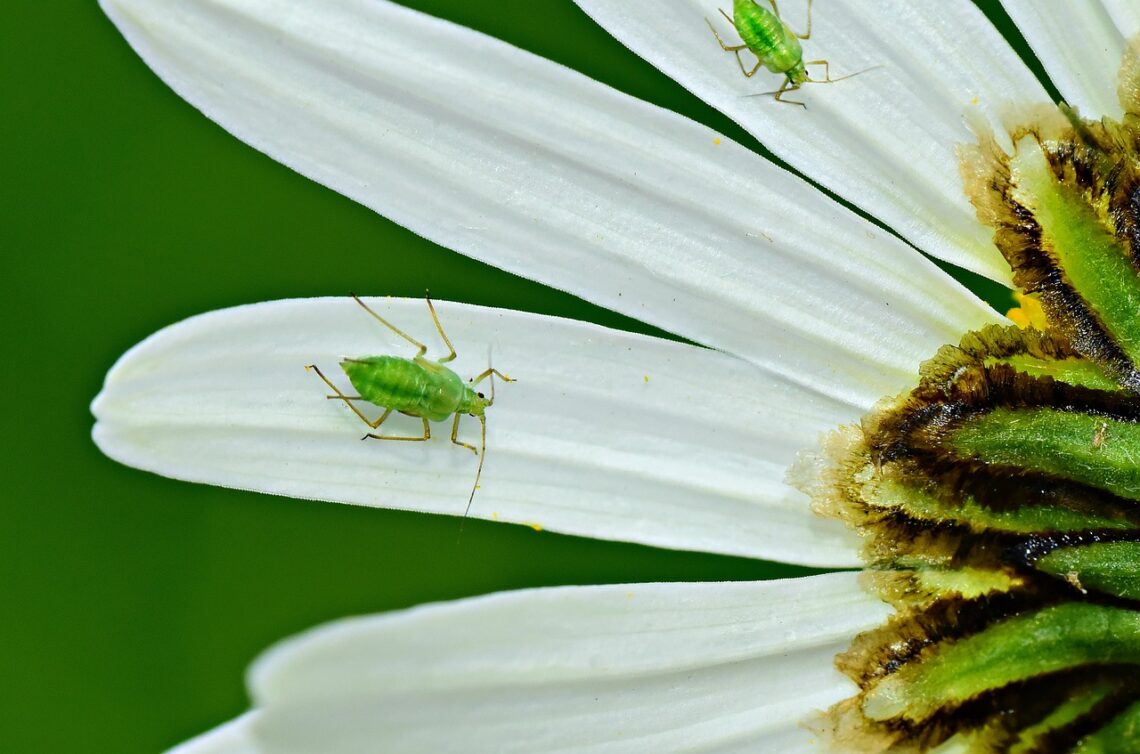Find out the Most Common Pests For Container Gardeners, How to Kill Them, and what conditions attract these insects.
Container gardening is a great way to grow plants in small spaces, but it comes with challenges like pests. Learn about the most Common Pests For Container Gardeners, how to get rid of them, and what conditions attract these insects so you can keep your plants healthy and thriving.
Common Pests For Container Gardeners

1. Aphids
Aphids belong to the Aphidoidea family; they are small sap-sucking insects that feed on tender tips and young leaves of the plant through their mouth.
How to Kill Them: You can get rid of them by using insecticides; these natural ways to kill aphid can also help you; check here.
What Conditions Cause Aphids: Warm and dry climates are the reason behind their growth.
2. Thrips
Thrips are 1-2 mm long, black, yellow slender insects; they reside in the soil and infest a large variety of plants. They cause yellowing and deformation of foliage.
How to Kill Them: Use insecticides like fipronil, acetamiprid, or imidacloprid combined with piperonyl butoxide or apply a solution of neem oil and peppermint oil.
What Conditions Cause Thrips: Dry and warm climatic conditions increase their growth, whereas humidity reduces them.
3. Mealybugs
Mealybugs can be seen in temperate or warm regions; they are wingless oval insects that crate white cotton-like masses of bugs that develop on the undersides of stems, leaves, and flowers.
How to Kill Them: Spray the plant with a solution of insecticidal soap, pyrethrins, or neem oil.
What Conditions Cause Mealybugs: Mealybugs are lured to plants with soft growth and thrive when the plants are overfertilized or overwatered.
4. Spider mites
The spider mites’ eggs reside on the undersides of the leaves; they can cause considerable damage to plants when found in large numbers.
How to Kill Them: Read this post and find easy ways to get rid of spider mites.
What Conditions Cause spider mites: Hot and dry conditions.
5. Snails and Slugs
Snails and slugs can cause considerable damage to crops; they feed continuously on the plants and make large holes on leaves, and affect flowers, tubers, and stems as well.
How to Kill Them: For organic growers, use pallets based on metaldehyde to attract them to come out from holes or ferric phosphate.
What Conditions Cause Them: They thrive in wet climate conditions; the infestation comes after rainfalls or dewy nights.
6. Beetles
There are several adult beetles that lay waste to home gardens. The varieties include asparagus beetles, flea beetles, cucumber beetles, Japanese beetles, Colorado potato beetles, and Mexican beetles.
How to Kill Them: Use homemade pepper spray by mixing hot peppers and garlic or neem oil.
What Conditions Thrive Beetles: Different types of beetles get tempted by different materials and conditions. Some species hide under stored grains and packaged foods.
7. Tobacco Caterpillars
Tobacco Caterpillars can be seen causing damage to foliage; young larvae consume and scrape the leaves, while older ones spread and feed the leaves, causing poor growth.
How to Kill Them: Use neem oil or kernels and extracts of Pongamia glabra seeds. To control young larvae, use insecticides.
What Conditions Thrive Them: They thrive at the temperature range between 59-95 F. Low humidity and temperatures can reduce their fertility.
8. Whiteflies
Whiteflies are small, white to yellow, soft-bodied winged insects; they are related to mealybugs and aphids. They develop yellow spots on leaves or leaf deformation and curling of the foliage.
How to Kill Them: Use natural pesticides based on sugar apple oil (Annona squamosa), neem oil, insecticidal soaps, pyrethrins, or neem seed kernel extracts.
What Conditions Thrive Whiteflies: They flourish in dry, warm conditions.
9. Vine weevils Larvae
Vine weevil Larvae are tiny cream-colored grubs with brown heads; they generally feed on plants’ roots and cause the sudden collapse of the plant.
How to Kill Them: For biological control, use pathogenic vine weevil nematodes or use insecticide.
What Conditions Thrive Vine weevils Larvae: Potted plants, under cover or outdoors, can be harmed by vine weevil grubs.
10. Powdery Mildew
Powdery Mildew is a fungal disease that affects a wide range of plants; you can identify them as light grey or white powdery spots on the leaf surfaces.
How to Kill Them: Use fungicide, don’t fertilize the plant, remove the infected foliage, don’t water from above, and improve air circulation.
What Conditions Cause Them: Warm, dry climates lead to powdery mildew.



